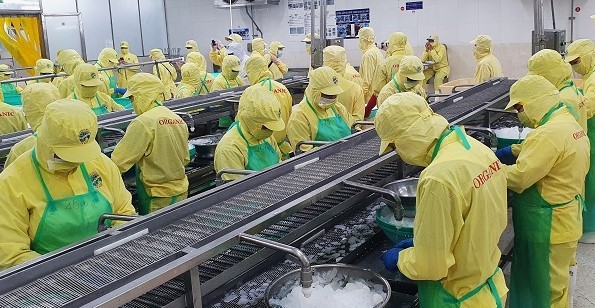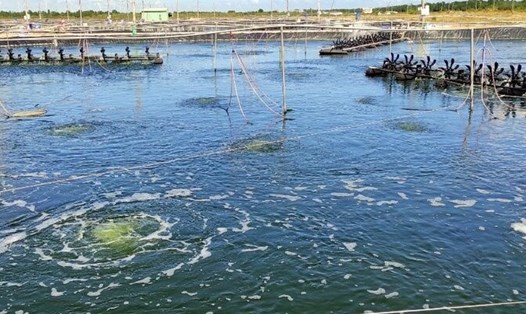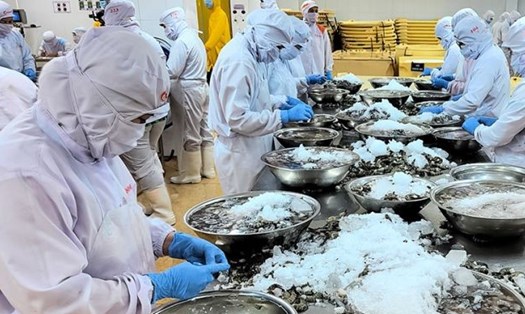On March 22, Ca Mau province held a conference to deploy a plan to develop breakthrough production in the shrimp industry of Ca Mau province.
Speaking at the conference, Chairman of the Provincial People's Committee Pham Thanh Ngai raised the issue of why the province's shrimp industry is known as the "shrimp capital" of the country, but in recent years, output has increased very slowly, lacking breakthroughs. Export turnover is struggling at 1.1- 1.2 billion USD.
Chairman of Ca Mau stated that there are still problems in cooperation between businesses and shrimp farmers that need to be resolved; Why are shrimp farmers still not interested in applying scientific and technical advances in production...
According to the Chairman of the People's Committee of Ca Mau province, to increase the value of shrimp, it is necessary to have the cooperation of sectors and levels, especially seafood enterprises in the area to support the locality, join hands with people to accompany production, and increase the value of shrimp.

The Chairman of the People's Committee of Ca Mau province also requested all levels, sectors and localities to propagate shrimp farmers to change their awareness and thinking in production, actively participate in economic models to create stable raw material areas. Follow technical processes in shrimp farming, ensuring clean, quality shrimp. Focus on dismantling infrastructure, reorganizing production, and linking product consumption. Timely remove difficulties and obstacles in the process of cooperation and linkage between enterprises and cooperatives and people, ensure harmony of interests, promote the advantages of Ca Mau shrimp, contributing to achieving the economic growth target of over 8% in 2025 of the province.
Ca Mau has an area of improved cross-ultural shrimp farming of about 166,000 hectares, with 83,807 farming households, with an average yield of 353 kg/ha/year, an estimated output of about 58,128 tons (for male shrimp). There are 433 concentrated shrimp farming areas with 95,827 hectares, with 46,988 farming households. The area of super-intensive shrimp farming is estimated at 5,500 hectares, the average yield is about 23 tons/ha/year, the estimated output is 126,500 tons.
Although certain results have been achieved, the development of the province's shrimp industry still has some limitations and difficulties such as many shortcomings in development planning; farming infrastructure has not met requirements; supply services for input materials, quality, unstable prices, unhealthy competition, difficult to control; increasingly polluted environment, uncontrollable epidemics; investment attraction mechanisms and policies are still inadequate; people and businesses lack capital, have difficulty accessing capital; production organization according to chain linkages is slow to develop, unsustainable; logistics services are still limited, high costs, so competitiveness is low, production and business efficiency are not high, and are unsustainable.







